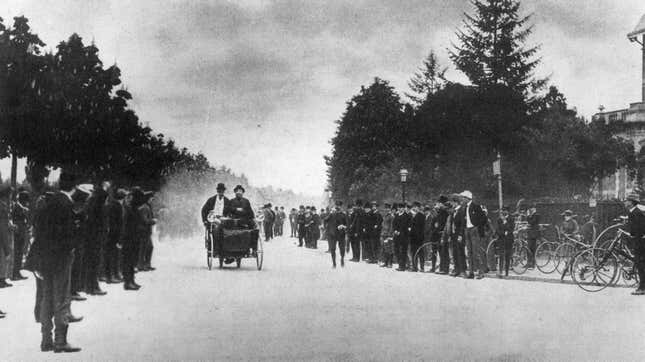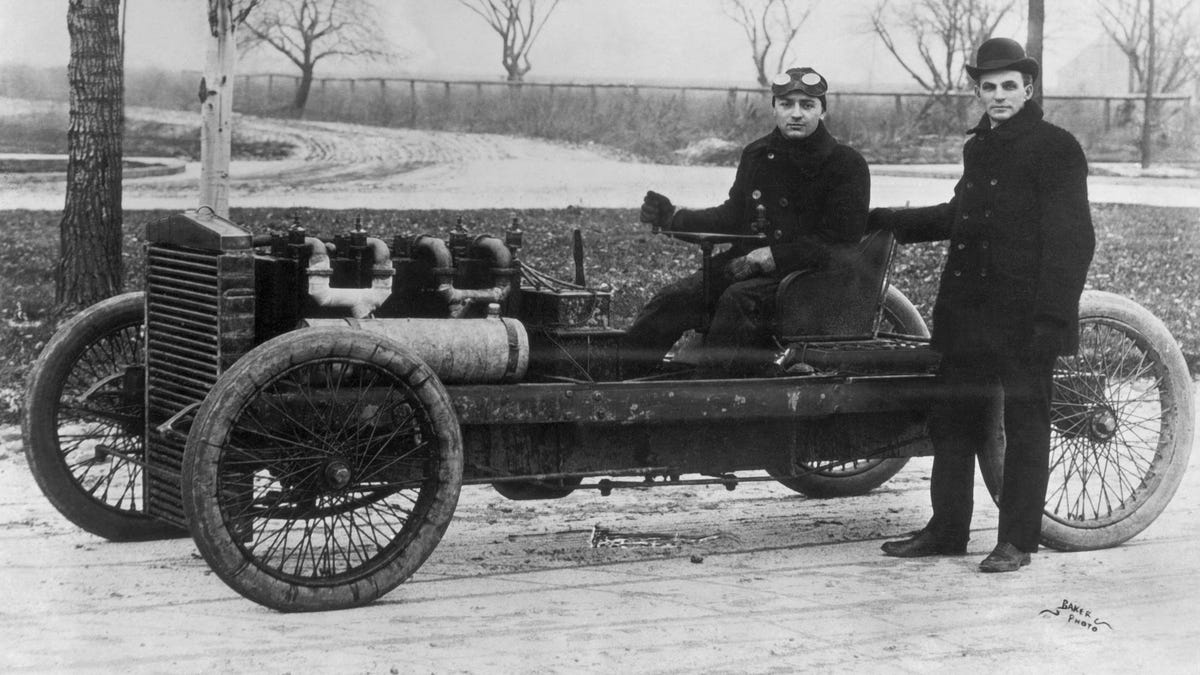“Auto racing began 5 minutes after the second car was built” is a sentence that most racing fans have heard at least once during their lives. It is usually evoked to illustrate humanity’s innate competitiveness and how racing was a natural use for automobiles. The quote is widely attributed to Henry Ford, except there is zero evidence of this. Actually, nothing about this quote is correct. The first attempt at a race featured only a single car and was a stunt to sell newspapers.
Let’s get the quote’s attribution out of the way first. While the sites that feed Facebook with inspirational quote images will tell you that Ford first uttered the enduring words, no reputable source backs this up. The closest thing to an official attribution that could be found was on the online gift shop for the Henry Ford, the museum founded by the automotive magnate. The shop offers a long-sleeve t-shirt with the racing quote printed on its front and attributed to Ford in the description.
A museum spokesperson told Jalopnik that attribution to Ford in the item’s description was an error. The quote is featured in the Henry Ford’s “Driven to Win” exhibit without citation as “an old joke.” Yes, it’s most likely just an anecdotal sentence that has stood the test of time.
It wouldn’t have been surprising if Ford himself claimed to be the source. He was the kind of person to twist the truth to make himself look cooler. For example, His quote stating, “any customer can have a car painted any color that he wants so long as it’s black,” first appeared in his autobiography nearly twenty years after the purported interaction. Ford’s story also occurred five years before the automaker introduced the black-only Model T policy.

Racing’s enduring quote is also incorrect factually and thematically. The first attempt at a car race was run in 1887 along a 12.5-mile route from the Pont de Neuilly in Paris to Versailles, organized by Parisian cycling magazine Le Vélocipède Illustré. Sadly, there was only a single entry. The Comte de Dion and his business partner Georges Bouton entered La Marquise, a four-wheeled steam-powered car. According to the Guardian, the pair drove in the course in an hour and 14 minutes.
There were earlier competitions involving lumbering road locomotives in the United States and the United Kingdom. However, no one then or now would describe a massive steam-powered tracked vehicle as an automobile.
The consensus label of the first car race is typically given to the 1894 Paris-Rouen, organized by Parisian publication and the then-world’s largest newspaper Le Petit Journal. Our old friend Comte de Dion crossed the finish line first in Normandy, but he was disqualified for violating the event’s technical regulations.
The 1894 Paris-Rouen would immediately lead to the Automobile Club de France’s annual city-to-city race, later the French Grand Prix and ultimately the Formula 1 World Championship. This event would also inspire a similar event in Chicago and the proliferation of racing in the United States.
Automobile and bicycle racing was created in the late 19th Century from the top down to sell newspapers. The races provided content to fill pages, and companies were eager to buy advertising to promote the products being raced. Most things have stayed the same in the 130 years since, except television broadcasters have replaced newspaper publishers.
Surprisingly, La Marquise is still around and fully functional. The historic vehicle sold at auction for $4.6 million in 2011.

